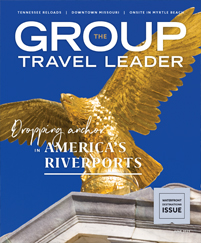Though today it forms the most central part of our country, America’s heartland was once a frontier area difficult to reach and even harder to navigate until the railroads unified the nation and began to crisscross and link the area to the rest of the country.
As a result, so much of the past of the Midwest is defined by its rivers, and as cities complete revitalization projects that turn formerly industrial waterfront arteries into rich areas for recreation, these rivers are increasingly becoming part of heartland cities’ present and futures.
Hannibal, Missouri
Historic Hannibal, where most buildings on Main Street date from between 1840 and 1890, shows what life was like in an 1800s river town, particularly for its most notable resident: Samuel Clemens, aka Mark Twain.
“When you get off a riverboat tour, you can literally get off the boat, walk a block and be at his home,” said Megan Rapp, assistant director of the Hannibal Convention and Visitors Bureau. “It’s easy to see how close he was growing up and get an idea of his love of the river and why he was so fascinated with it throughout his life that he continued to write about it, even though he left at 17 and never returned.”
The Mark Twain Boyhood Home and Museum is made up of multiple buildings, including the homes of Huck Finn and Becky Thatcher, as well as the author’s boyhood house, where he lived from 1844 to 1853. Groups can take guided tours of the properties or explore the complex on their own before heading to the Hannibal History Museum, which introduces the non-Twain-related history of the river town.
Rapp recommends groups take either the Mark Twain Riverboat for a daytime sightseeing cruise with a narration of the city’s history or an evening dinner cruise with live entertainment or, in the fall, a foliage tour. Boats run April through late October because of the river’s freezing in the winter.
www.visithannibal.com
Sioux City, Iowa
Sioux City’s riverfront park has long been a magnet for locals to stroll or bike ride among the sculptures commemorating major figures from the city’s past, among them Lewis and Clark, and War Eagle. But in 2016, the waterfronts of the Lloyd, Big Sioux and Missouri rivers that flow through and around the city will have a whole new look.
The city is at the tail end of a $1.4 million project to create a 1.5-mile trail linking the city’s extant riverfront parks and adding new recreation options in the area formerly occupied by a riverboat casino.
Beyond recreation, the parks also provide some of the city’s best ways to get acquainted with the history of Sioux City and the region thanks to the Lewis and Clark Interpretive Center, which focuses on the July-through-September portion of the 1804 Lewis and Clark expedition, and the Sergeant Floyd River Museum and Welcome Center. Named for the only member of the Lewis and Clark expedition to have perished en route, the river museum is also known locally as the riverboat museum, as it is housed on a decommissioned riverboat and focuses on the history of the Missouri River from Native American settlements through the steamboat era.
Though it’s not directly on the riverfront, one of the biggest new changes to the city, especially for visitors, is the arrival of the 54-room Hard Rock Hotel and Casino Sioux City, located in a former train station just over a mile from the Lewis and Clark Interpretive Center and one of the only AAA four-diamond hotels in Iowa.











